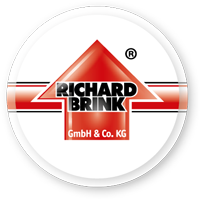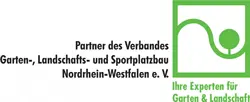When planning photovoltaic installations, the use of time-saving systems means a shorter assembly period and considerable cost savings. The Miralux solar substructures from Richard Brink GmbH & Co. KG guarantee exactly that: the products require minimal storage space and are simple to use while still facilitating a thoroughly robust system thanks to their construction from hot-dip galvanised steel or, on request, aluminium. Besides this, they are quick and easy to assemble on the roof surface.
The substructures are always available in two orientations: either as a south-facing mounting system for a profitable installation or as an east-west system for continuous energy generation throughout the day. Both are easy to use and completely secure. They have been aerodynamically optimised in wind tunnel tests, making them comparatively low ballast. Installation of the models requires no penetration of the roof cladding, and integrated cable channels guarantee reliable cabling. The system is easy to expand retroactively thanks to its modular structure.
Flexible module clamps as standard
With its flexible module clamps, the metal products manufacturer recently presented an innovative development under the Miralux Flex brand which allows all kinds of commercially available panel sizes to be secured to the mounts. After successfully introducing the Flex variant in the east-west version, Richard Brink has now adapted these clamps to also fit the south-facing mounting system. The Miralux Flex products thus now represent the standard for both orientations and guarantee maximum flexibility for every photovoltaic project.
Additional ballast supports are available for the substructures as are two types of screwable ballast block. Both blocks have a base area of 400 x 400mm and ensure a stable and safe installation. Beyond the safety aspect, they facilitate a professional arrangement on the roof and make the systems even easier to care for and maintain as they lift the structures above the roof surface. While the first, square-shaped variant weighs in at around 34kg per block, the second 16kg block featuring a flat base panel is especially suited to installation on gravel or green roofs.
Green combination for new and existing buildings
Besides producing and supplying solar substructures, the company Richard Brink has recently focused more of its attention on developing solutions for greener buildings, including three integrated systems for extensive green roofs. As a result, its portfolio now features two key product groups for the sustainable and large-scale use of roof surfaces. Rather than having to choose between a photovoltaic system or a green roof solution, clients can now find products that combine both these elements in the Miralux range – for existing and new buildings.
An additional mounting system is available for the east-west-facing Miralux Flex systems, for example. Not only does this allow new green roofs to be planted in combination with photovoltaic systems, it also enables existing extensive roof planting to be equipped with solar panels at a later stage. The required ballast blocks are simply screwed in underneath the mounting systems.
Planting and ballast in one
The brand-new Miralux Green system takes a different approach. This type of solar substructure, which can be used for both east-west and south-facing set-ups, is directly incorporated into the roof planting. The sedum mat and the layer of granulate act as another type of ballast as they lie directly over special supporting bases integrated into the substructures. Installation is as simple as it is efficient and takes just a few steps: a root barrier foil and drain mat complete with filter and protection fleece is laid on the roof surface. The support plates that form part of the substructure, which are covered with a glass fibre mesh, are positioned according to the later orientation of the solar panels. In the next step, the solar substructure is fixed in place using the support plates. Once the entire system has been built and put into position, the granulate and plant cover can be added. Both these components place extra weight across the entirety of the glass fibre mesh and secure the structure to the substrate like a floor anchor while remaining invisible. The solar modules are then fixed to the substructure and wired together.
(approx. 5,410 characters)











